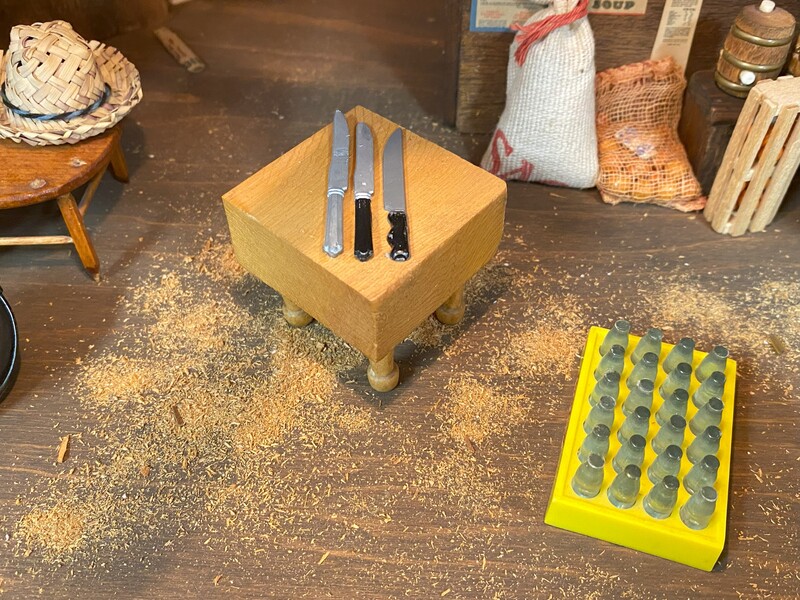The Country Store, Inspiration
There are also nods to innovative technologies occurring in the Country Store dollhouse room that are specific to the Northeastern Pennsylvanian region, such as a lifelike pot-bellied stove with scatterings of tiny pieces of anthracite coal and sawdust along the floorboards.
Anthracite coal was a great industry for the Wyoming Valley because Pennsylvania was discovered for having the world’s largest deposits of this rich, high quality coal. Anthracite was more desirable than bituminous coal, its cousin, because it could burn for longer periods of time at a cleaner and hotter quality. This meant it was a perfect source for heating indoors.
American commercial interests in the 1950s shifted with the development of specialty stores–-jewelry, clothing, furniture, hardware, and the like. These stores eventually became their own distinct business enterprises, however, they all got their start within a Country Store.
Russ reflects on this change and states
that modern conditions have caused it to become antiquated is not to say that the country store was inefficient,or wasteful, or useless. [On] the contrary, it did a good job as distributor and buyer for its own marketing district; without it, the farmers would have been more isolated than they were. In fact it is hard to see how rural people of fifty or more years ago could have done without the general store, which sold them their staples and bought their produce. Like the horse and buggy, it represents an age in American history. That age was an age of mud roads, subsistence farming, small businesses, local isolation, and ruralness. Many general stores can still be found in country districts, but they are not the emporia they once were.
-William A. Russ, Jr. “The Country Store a Half Century Ago” Pennsylvania History: A Journal of Mid-Atlantic Studies Volume: 17 Issue 3 (1950), pp.212-214.
The Country Store represents the origins of the commercial development of America and from her overflowing stocked shelves to the trusted mailbox at the back, Fisher truly captures the nostalgia of this era.
While the Pennsylvania Dutch Kitchen miniature focused on practical domesticity and the Country Store focused on the needs of a whole community, let's move on and compare how the Victorian Room demonstrated a family's social status.



![<a href="/omeka/items/browse?advanced%5B0%5D%5Belement_id%5D=50&advanced%5B0%5D%5Btype%5D=is+exactly&advanced%5B0%5D%5Bterms%5D=Photograph+of+Pennsylvania+Lumbermill+Workers%2C+Pennsylvania+Lumber+Heritage%2C+%5Bca.+late+nineteenth+century%5D">Photograph of Pennsylvania Lumbermill Workers, Pennsylvania Lumber Heritage, [ca. late nineteenth century]</a> <a href="/omeka/items/browse?advanced%5B0%5D%5Belement_id%5D=50&advanced%5B0%5D%5Btype%5D=is+exactly&advanced%5B0%5D%5Bterms%5D=Photograph+of+Pennsylvania+Lumbermill+Workers%2C+Pennsylvania+Lumber+Heritage%2C+%5Bca.+late+nineteenth+century%5D">Photograph of Pennsylvania Lumbermill Workers, Pennsylvania Lumber Heritage, [ca. late nineteenth century]</a>](https://omeka.wilkes.edu/omeka/files/square_thumbnails/67280b807682376ae06ea2df85b6cfa5.jpg)